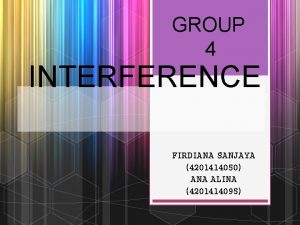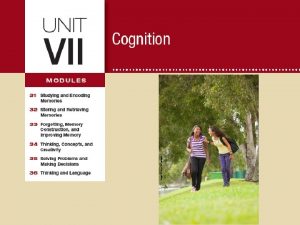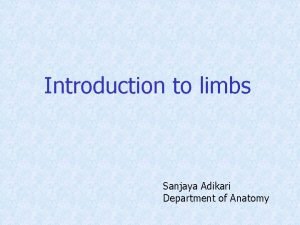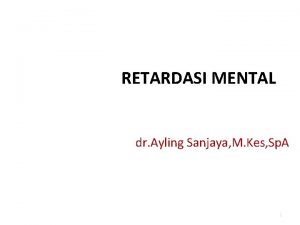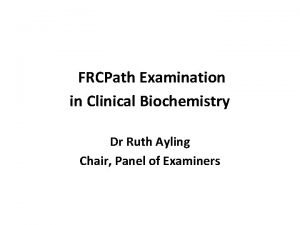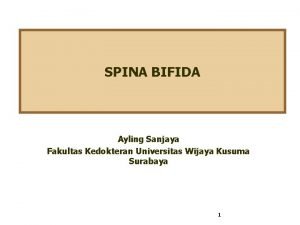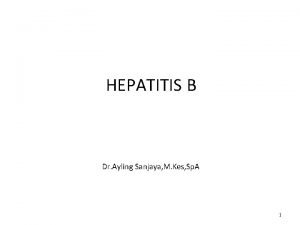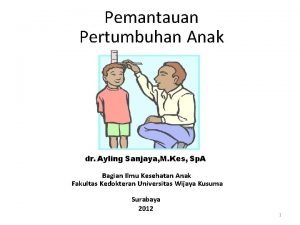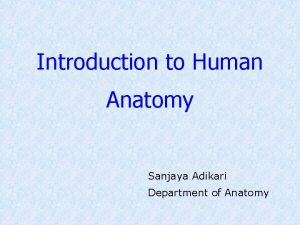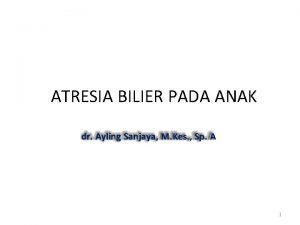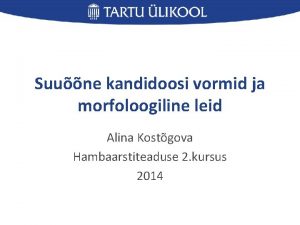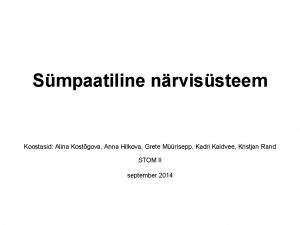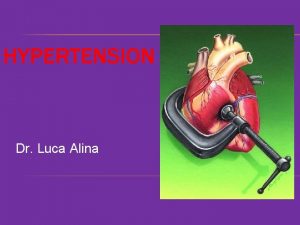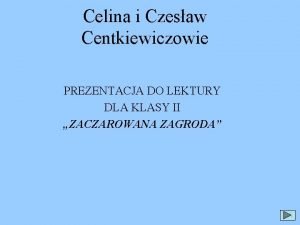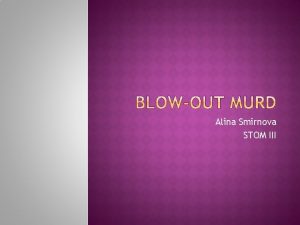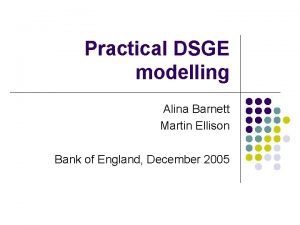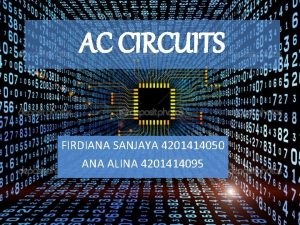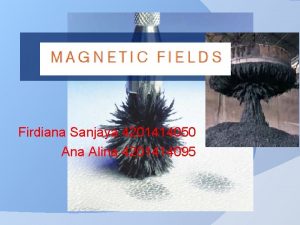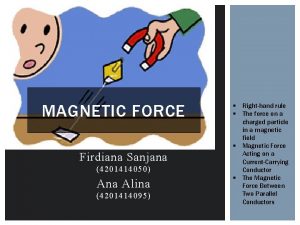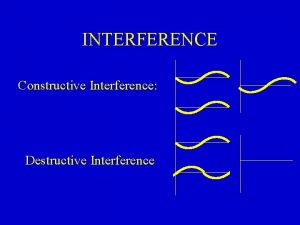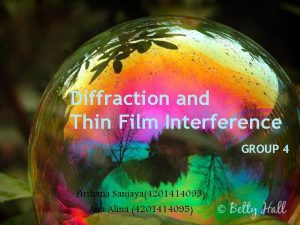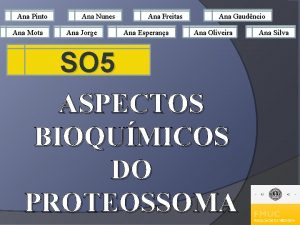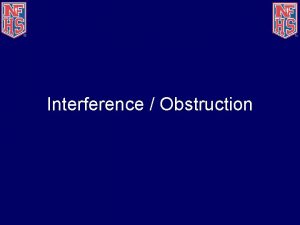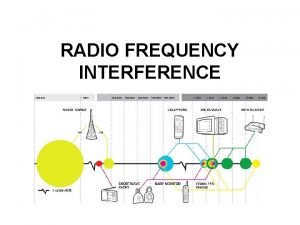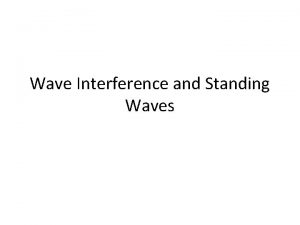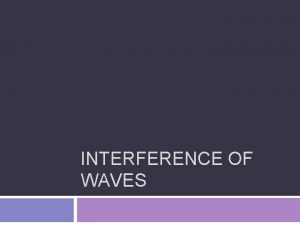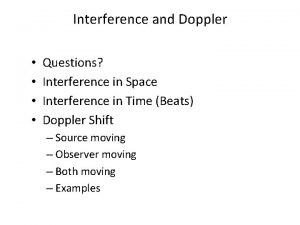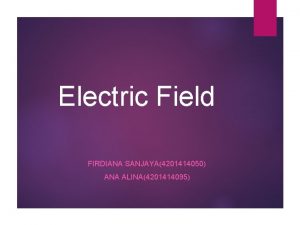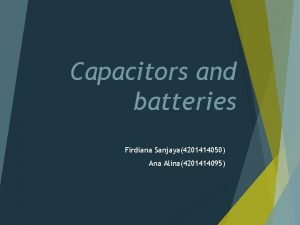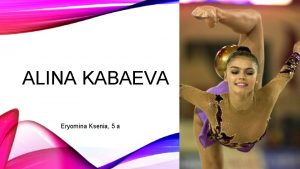GROUP 4 INTERFERENCE FIRDIANA SANJAYA 4201414050 ANA ALINA




















- Slides: 20

GROUP 4 INTERFERENCE FIRDIANA SANJAYA (4201414050) ANA ALINA (4201414095)

The colors in many of a hummingbird’s feathers are not due to pigment. The Iridescence that makes the brilliant colors that often appear on the throat and belly is due to an interference effect caused by structures in the feathers.

Conditions for Interference The sources must be coherent—that is, they must maintain a constant phase with respect to each other. The sources should be monochromatic— that is, of a single wavelength.

Young’s Double-Slit Experiment A common method for producing two coherent light sources is to use a monochromatic source to illuminate a barrier containing two small openings (usually in the shape of slits). If light waves did not spread out after passing through the slits, no interference would occur. The light waves from the two slits overlap as they spread out, filling what we expect to be shadowed regions with light and producing interference fringes on a screen placed to the right of the slits.

At a beach in Tel Aviv, Israel, plane water waves pass through two openings in a breakwall.

Schematic diagram of Young’s double-slit experiment. Slits S 1 and S 2 behave as coherent sources of light waves that produce an interference pattern on the viewing screen (drawing not to scale). An enlargement of the center of a fringe pattern formed on the viewing screen.

Constructive interference occurs at point P when the waves combine. (b) Constructive interference also occurs at point Q. (c) Destructive interferenceoccurs at R when the two waves combine because the upper wave falls half a wavelength behind the lower wave. (All figures not to scale. )



Problem


Intensity Distribution of the Double-Slit Interference Pattern suppose that the two slits represent coherent sources of sinusoidal waves such that the two waves from the slits have the same angular frequency - and a constant phase difference. . The total magnitude of the electric field at point P on the screen in Figure 37. 6 is the superposition of the two waves. Assuming that the two waves have the same amplitude E 0, we can write the magnitude of the electric field at point P due to each wave separately as


Phasor Addition of Waves

Phasor Diagrams for Two Coherent Sources As an example of the phasor method, consider the interference pattern produced by two coherent sources. The light intensity at a point is a maximum when ER is a maximum; this occurs at. # 0, 2/, 4/, . . The light intensity at some point is zero when ER is zero; this occurs at. # /, 3/, 5/, . . These results are in complete agreement with the analytical procedure described in the preceding section. v Three-Slit Interference Pattern Using phasor diagrams, let us analyze the interference pattern caused by three equally spaced slits. We can express the electric field components at a point P on the screen caused by waves from the individual slits as v




Change of Phase Due to Reflection an electromagnetic wave undergoes a phase change of 180°upon reflection from a medium that has a higher index of refraction than the one in which the wave is traveling.

THANK YOU. . .
 Ana alina
Ana alina Proactive interference example
Proactive interference example Retroactive interference
Retroactive interference Dr ayling sanjaya
Dr ayling sanjaya Perforators of lower limb
Perforators of lower limb Ayling sanjaya
Ayling sanjaya Dr ayling sanjaya
Dr ayling sanjaya Frcpath examination
Frcpath examination Jenis spina bifida
Jenis spina bifida Dr ayling
Dr ayling Dr ayling sanjaya
Dr ayling sanjaya Sanjaya adikari
Sanjaya adikari Ayling sanjaya
Ayling sanjaya Alina webber
Alina webber Alina kostõgova
Alina kostõgova Grete müürisepp
Grete müürisepp Elena orlova dogs
Elena orlova dogs Alina luca
Alina luca Centkiewiczowie prezentacja
Centkiewiczowie prezentacja Alina smirnova
Alina smirnova Alina barnett
Alina barnett
